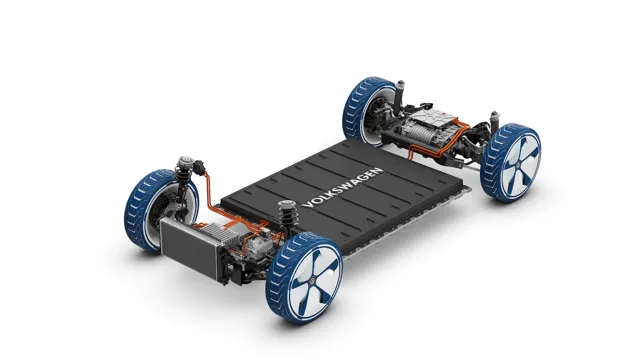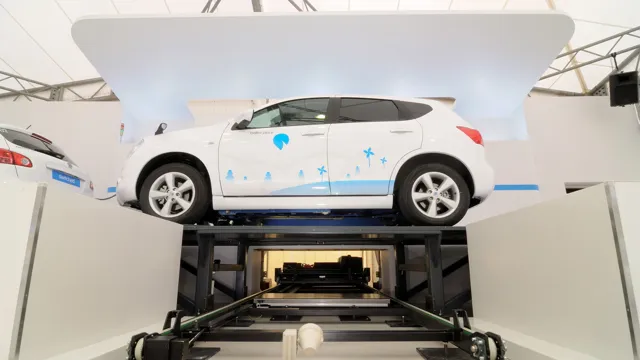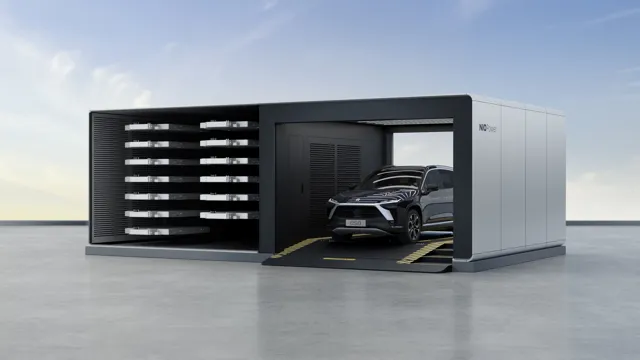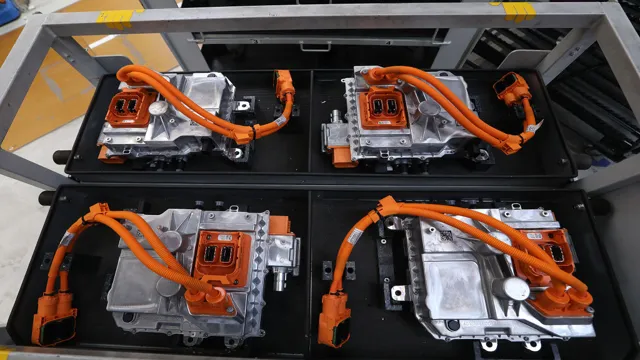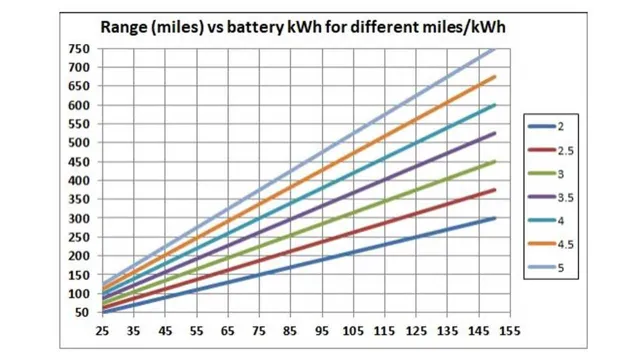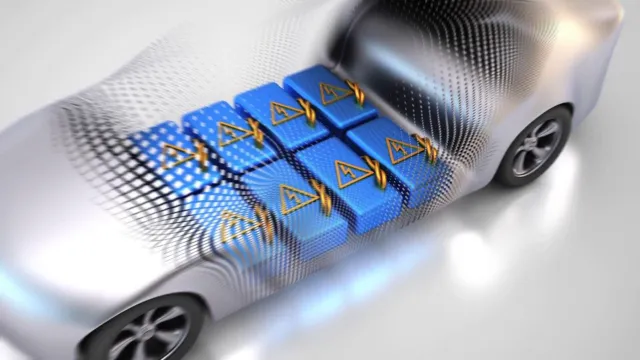The Power Behind Your Ride: A Deep Dive into Electric Car Battery Packs
Have you ever wondered what powers an electric car? How it can run for hundreds of miles without a single drop of gas? The answer lies in the battery pack. This essential component is the heart of an electric car, providing the energy needed to power the motor. Think of the battery pack as the fuel tank of an electric car.
It stores energy in the form of electricity, which is used to power the motor. Without it, an electric car is nothing more than a fancy golf cart. But not all battery packs are created equal.
The type and size of the battery pack can greatly affect the range and performance of an electric car. The larger the pack, the longer the range, but also the heavier the car. And the type of battery used can determine how fast the car can charge and how long it will last.
Despite these limitations, battery technology is rapidly improving, making electric cars more practical and affordable for everyday use. With more and more car manufacturers turning to electric vehicles, the battery pack is becoming more important than ever. So the next time you see an electric car on the road, just remember: it’s the battery pack that’s powering the future of transportation.
What is a Battery Pack?
A battery pack is an essential component of an electric car, powering the vehicle’s electric motor and providing energy to other systems such as lights, entertainment, and heating. It is essentially a collection of rechargeable batteries arranged in a specific configuration to provide the required voltage and current. Battery packs use various types of chemistry, such as lithium-ion or nickel-metal hydride, to store and release energy efficiently.
The battery pack’s size and capacity depend on the vehicle’s specifications, such as range and power requirements. In electric cars, the battery pack is typically located under the vehicle’s floor, contributing to its stability and handling. In summary, a battery pack is a crucial part of an electric car, providing the energy to power the vehicle and making it a viable alternative to traditional fuel-powered cars, with the potential to reduce carbon emissions and lessen our dependence on fossil fuels.
Compact and High-Powered
A battery pack is a portable device that is designed to store energy and supply it to electronic devices. It is made up of individual battery cells, which are organized in a specific way to maximize energy output and storage capacity. The compact size and high-powered nature of battery packs make them an ideal solution for those on the go who need reliable power for their devices.
Battery packs come in a variety of shapes and sizes, with different charging capacities and output voltages, so it’s important to choose the right one for your needs. Whether you’re a traveler who needs to charge their smartphone on the go, or a photographer who needs to power their camera all day long, there is a battery pack that can meet your needs. So, if you’re looking for a reliable and convenient way to stay powered up, consider investing in a high-quality battery pack and never worry about running out of juice again!
The Heart of Electric Cars
The heart of an electric car is its battery pack. But, what is a battery pack? It is a collection of individual battery “cells” that work together to power the car’s electric motor. Each battery cell is typically made up of three key components: an anode, a cathode, and an electrolyte.
The anode and cathode are separated by the electrolyte, which acts as a conductor for the movement of ions between the two components. When the car is plugged into a charging station, electricity is sent through a cable and into the battery pack. This electricity charges the battery cells, creating a chemical reaction that stores energy.
When the car is in use, this stored energy is sent to the electric motor, which converts it into mechanical energy, propelling the car forward. A crucial component of the battery pack is its management system, which regulates the flow of energy and helps to extend the battery’s life. Overall, the battery pack is the foundation of the electric car and plays a critical role in its performance and range.
How Does the Battery Pack Work?
One of the most important components of an electric car is the battery pack, which is responsible for storing the energy that powers the vehicle. Typically, these battery packs are made up of numerous individual battery cells that are connected together in a series or parallel configuration. The cells are designed to discharge at a consistent rate, which ensures that the car is able to maintain a steady amount of power.
In addition, the battery pack includes a variety of safety features, such as temperature sensors and overcharge protection, to prevent any potentially dangerous situations. With advances in technology and an increased focus on sustainability, battery packs in electric cars are becoming more efficient and affordable, making it an increasingly popular choice among car buyers.
Chemical Reaction and Electricity Flow
One of the most fascinating things about batteries is the process that allows them to generate electricity. The chemical reaction that takes place inside the battery pack involves the flow of electrons from one electrode to another. Typically, this process involves a reduction-oxidation reaction, where one electrode gains electrons (reduced) while the other loses them (oxidized).
This creates an electrical potential difference between the electrodes, which in turn generates a flow of electrons through an external circuit. The voltage of the battery pack is determined by the nature of the chemical reaction taking place and the potential difference between the electrodes. The lower the voltage of the battery, the less energy it can provide, and vice versa.
Understanding how a battery pack works is essential to optimizing its performance and ensuring that it delivers the power needed to keep your devices running smoothly.
Rechargeable and Eco-Friendly
When it comes to rechargeable battery packs, it’s important to know how they actually work. Essentially, these battery packs contain rechargeable cells that can be powered up again and again. When you plug in your device or accessory (like a portable speaker or phone case), the battery pack is then able to transfer its stored power to that device, keeping it charged and ready to use.
The beauty of rechargeable battery packs is that they can be recharged multiple times, meaning they’re a much more eco-friendly option compared to disposable batteries which simply get thrown away after one use. In addition to being good for the environment, rechargeable battery packs are also convenient and cost-effective in the long run, since you don’t need to keep buying new batteries all the time. Overall, rechargeable battery packs are a great way to keep your devices powered up while also being kind to the planet.
Range Anxiety and Charging Stations
When it comes to electric vehicles, one of the biggest concerns for drivers is range anxiety. With traditional gasoline-powered cars, you can easily find a gas station to refuel when you get low on gas. However, with electric cars, finding a charging station can be a bit more challenging.
The battery pack in electric cars, such as Tesla, works by supplying power to the electric motor that drives the vehicle. The pack typically consists of multiple lithium-ion battery cells that store the energy that powers the car. When the battery is low, it needs to be charged using a charging station.
This is where the range anxiety comes in – drivers worry about running out of power and not being able to find a charging station. Fortunately, as more and more electric cars hit the road, more charging stations are being built, making it easier for drivers to travel longer distances. Additionally, many electric cars have built-in navigation systems that help drivers locate charging stations along their route.
With advancements in battery technology and charging infrastructure, range anxiety will soon become a thing of the past, paving the way for an electric-driven future.
Advancements in Battery Technology
Battery pack technology has revolutionized the way we power our electric vehicles. New advancements in battery technology have greatly increased the range and efficiency of these vehicles. Battery packs are designed with multiple cells, each containing a positive electrode, a negative electrode, and electrolytes to allow ions to move between them.
Lithium-ion batteries are the most commonly used type, providing high energy density and long cycle life. The size and weight of the battery pack have been drastically improved over the years, making it more feasible to run an electric car with a single charge. Manufacturers are also incorporating safety features such as thermal management systems to prevent overheating or fires.
The battery pack is an essential component of any electric vehicle, and these advancements in technology have enabled us to drive farther with less charging time. With the increasing demand for electric vehicles, the focus on further improving battery technology will only continue to grow.
Solid-State Batteries
Solid-state batteries represent the future of battery technology, promising significant improvements in energy density, safety, and cost-effectiveness. Unlike traditional lithium-ion batteries, these batteries use a solid electrolyte instead of a liquid electrolyte, allowing them to store more energy in a smaller form factor. Solid-state batteries are also safer since they don’t use flammable liquids, reducing the risk of fires and explosions.
Additionally, they are more durable and have longer lifetimes than traditional batteries, which means they don’t need to be replaced as often. With ongoing research and development efforts, the potential applications for solid-state batteries are endless, from electric cars to grid-level energy storage systems. The advancement of solid-state battery technology is expected to play a crucial role in the transition to a cleaner and more sustainable energy future.
Graphene Batteries and Super-Capacitors
The world of battery technology is advancing rapidly, and one of the most promising developments is the emergence of graphene batteries and super-capacitors. Graphene is a revolutionary material that consists of a single layer of carbon atoms arranged in a hexagonal lattice. It is incredibly lightweight and durable, making it an excellent material for energy storage.
Graphene batteries and super-capacitors have several advantages over traditional batteries, such as higher energy density, faster charging times, and longer cycle life. Additionally, they have the potential to be much safer than traditional batteries as they are less prone to overheating and explosion. The use of graphene in batteries has the potential to revolutionize the energy industry, making renewable energy more practical and accessible.
With all these benefits, graphene batteries and super-capacitors are set to become the future of energy storage.
The Future of Battery Packs in Electric Cars
The future of battery packs in electric cars is looking bright, with continuous efforts to increase capacity and efficiency. Battery technology has come a long way, often making news for advancements in materials and chemistry. The biggest hurdle is range anxiety, but with battery packs becoming more affordable and reliable, this should no longer be an issue soon.
Large-scale battery manufacturing facilities are now on the rise globally, making electric vehicles more accessible to a larger consumer base. Moreover, battery technology is evolving to include solid-state batteries, which will provide electric cars with even more range, faster charging times, and better safety than earlier Li-ion batteries. The demand for electric cars is set to grow, and the increase in battery pack production will follow suit.
The future of battery packs in electric cars looks promising, but this does not mean it is without its challenges to overcome, such as battery disposal and recycling. Nonetheless, the continued efforts to improve battery technology and energy storage is the key to creating a sustainable and greener future for all.
Conclusion
In conclusion, the battery pack in an electric car is the heart and soul of the vehicle. It’s the powerhouse that stores the energy needed for the car to run and provides the juice for a smooth and sustainable ride. Think of it like the rechargeable battery in your smartphone – without it, your device is useless.
And just like a smartphone battery, the battery pack in an electric car requires careful management and maintenance to ensure optimal performance. So, if you want to stay ahead of the game in the world of sustainable transportation, make sure you have a reliable and efficient battery pack to get you where you need to go!”
FAQs
What is a battery pack in an electric car?
A battery pack in an electric car is a collection of battery cells that provides power to the car’s electric motor.
How long does a battery pack in an electric car last?
The lifespan of a battery pack in an electric car depends on several factors, such as the type of battery, the driving conditions, and how often the battery is charged. Typically, a battery pack can last anywhere from 5 to 10 years.
How is a battery pack in an electric car charged?
A battery pack in an electric car can be charged through a standard electrical outlet, a home charging station, or a public charging station. Some electric cars also have regenerative braking, which uses the kinetic energy of the car to help recharge the battery.
How much does it cost to replace a battery pack in an electric car?
The cost of replacing a battery pack in an electric car varies depending on the make and model of the car, as well as the type of battery pack being used. In general, it can cost anywhere from $3,000 to $10,000 or more. However, many car manufacturers offer warranties or extended warranties that cover the cost of battery replacement for a certain number of years or miles.
